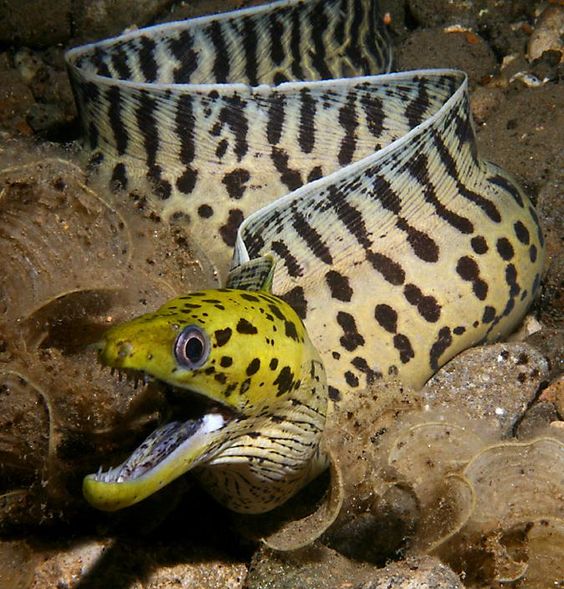The deepest parts of the ocean remain a mystery to people and scientists alike. And eels are just a tiny part of it. But, they are still incredibly interesting.
Here are some eel facts that will slither right into your brain and shock you.
Electrifying facts about eels
pic.twitter.com/t4cBJA2PqQ
— UberFacts (@UberFacts) July 5, 2021
So many options
There are over 800 different species of eels in the world. They can be as short as the 2-inch one-jawed eel, or as long as the 13-foot slender giant moray eel.
Most eels live in the shallow waters of the ocean, but some live in waters as deep as 13,000 feet.
They can burrow into sand, mud, or among rocks.
They are rarely seen in the wild
Most eels are also nocturnal, so they’re rarely seen by people.
And they come in all sizes
The heaviest eel is the European conger. The maximum size reported of one of these eels is 240 pounds.
That’s a lotta eel.
They are not cute babies
Most eels begin life as larvae. The larvae are flat and transparent, and they eat marine snow, which are small particles floating in the water.
From there, they become glass eels, so named for their appearance.
At this stage, they transition from the ocean to freshwater.
And they have different names
As they grow, they become what are called elvers.
In the 19th century, Londoners would call the passage of young eels along the Thames “eel fare.” It’s been theorized that that’s where the term “elver” comes from.
After being elvers, eels mature into yellow stage eels, and finally, silver stage eels.
At this point, most eels will be back in the ocean to mate.
Everyone knows them for their spark
One of the most commonly known types of eel, the electric eel, is not actually an eel at all!
It’s really a South American knifefish, and it’s more closely related to carps and catfish than to true eels.
Electric eels can emit shocks up to 650 volts. That’s over five times the power of a standard American wall socket. But despite their electrifying power, these eels aren’t usually very aggressive.
They’ll usually just shock to stun prey or ward off predators. They also use a weak electric pulse as a kind of radar because their eyesight is very bad.
They’re delicious
The eel used in sushi is usually unagi, which are freshwater eels.
But some are protected
The European eel, a common type of freshwater eel is currently an endangered species.
And they can be extremely dangerous
Eel blood is toxic to humans and other mammals if it is directly injected into the bloodstream.
Serum from an eel is about three times as poisonous as the most venomous viper. Luckily, the toxins in eel blood can be easily killed either by cooking or digestion.
Who knew eels could be suck fascinating creatures.


